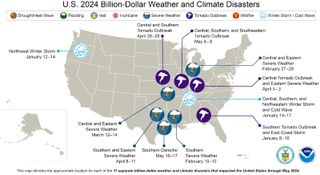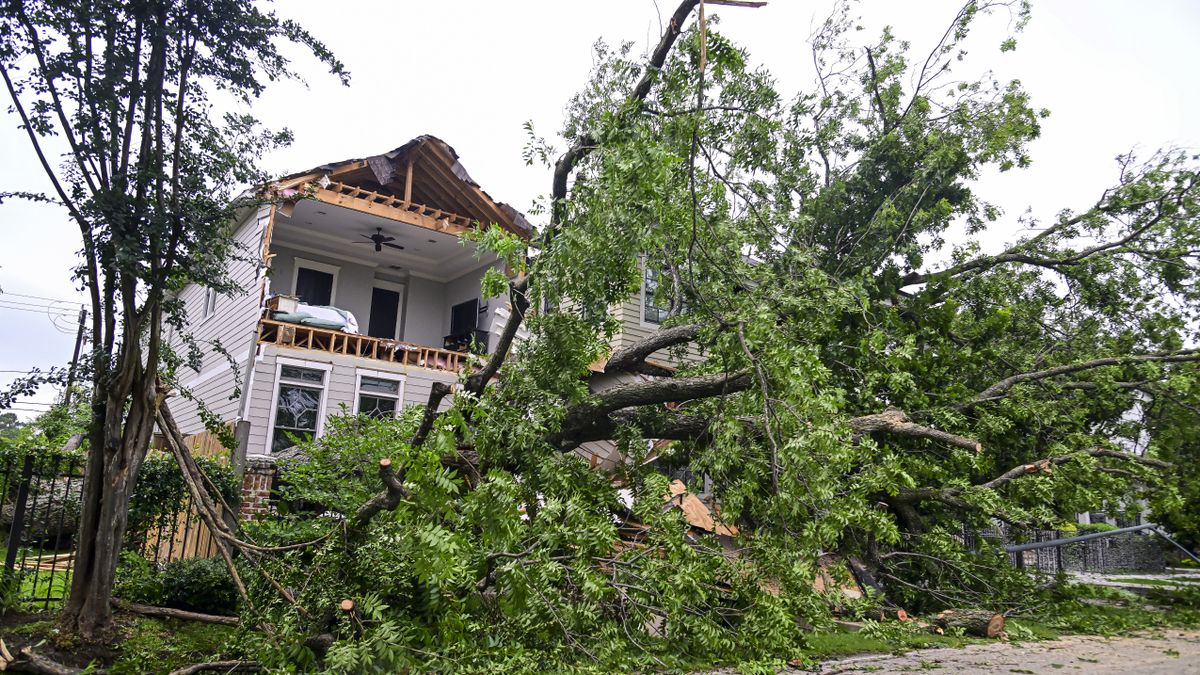Two severe weather events in May brought the number of billion-dollar disasters for the United States in 2024 up to nearly a dozen.
The month began with a tornado outbreak from May 6 to May 10 that stretched across 23 states, going from South Dakota to Florida. There were 167 tornadoes confirmed, including a deadly EF-4 per the Enhanced Fujita Scale, on the first day of the outbreak. This tornado devastated the towns of Barnsdall and Bartlesville in Oklahoma. Almost a week later, a derecho (a widespread, elongated wind storm that can form alongside fast-moving, severe thunderstorms) roared through Houston, Texas, with winds reaching speeds up to 100 miles per hour (161 kilometers per hour).
The destruction was extensive, and at least eight people lost their lives from the storm. The total of tornadoes across the U.S. in just March and April alone climbed to 450, which included the deadliest of the year — another EF-4 that claimed five lives in Greenfield, Iowa.
Eleven separate billion-dollar weather and climate events from January through the end of May each resulted in economic losses of at least $1 billion for the nation; combined, the damage cost totaled more than $25 billion. Two of the events were winter storms and the other nine spawned from other severe storms. This adds to the already growing number of billion-dollar disasters that have occurred since 1980, which sums up to 387 events causing more than $2.74 trillion worth of damage.
Related: 7 solar system worlds where the weather is crazy
May also had quite the climate roundup overall.
In addition to the severe storms that ravaged parts of the eastern U.S., drought conditions shifted — and droughts are one of the direct consequences of human-driven climate change, which scientists have confirmed is at an all-time high. The May 28 U.S. Drought Monitor Report shared there was a 4% drop since the end of April in the amount of the contiguous U.S. experiencing drought conditions, bringing the total to 13%. Parts of the country where the drought intensified included western Kansas, eastern Colorado, southeastern Wyoming, parts of the Northwest and Florida. Much of the Upper Midwest, the Midwest, Northern Rockies and parts of Hawaii saw a reduction in drought intensity.

Heat was also a big topic during the month of May, as the month ranked as the 13th warmest on record over the past 130 years. The average temperature for the month across the contiguous U.S. came in at 62.3 degrees Fahrenheit (16.8 degrees Celsius) with the eastern half of the country, including Florida, having its warmest May on record in particular. Such heat fluctuations are also to blame on human-driven climate change; overall, meteorological spring tied with 2016 as the sixth-warmest on record with an average of 53.7 degrees F (12 degrees C). Scientists have further confirmed that the summer of 2023 was the hottest in 2,000 years and that each month last year from June through December set a global heat record for its respective history (for instance, July 2023 was the hottest July on record).













/https://tf-cmsv2-smithsonianmag-media.s3.amazonaws.com/filer_public/34/31/3431771d-41e2-4f97-aed2-c5f1df5295da/gettyimages-1441066266_web.jpg)



![Ep266: [Lean Series] How to Plan a Responsible Fat Loss Phase Ep266: [Lean Series] How to Plan a Responsible Fat Loss Phase](https://carrotsncake.com/wp-content/uploads/2024/06/Carrots-N-Cake-VIP-Nutrition-Coaching-768x1040.jpeg)
.jpg)

Discussion about this post